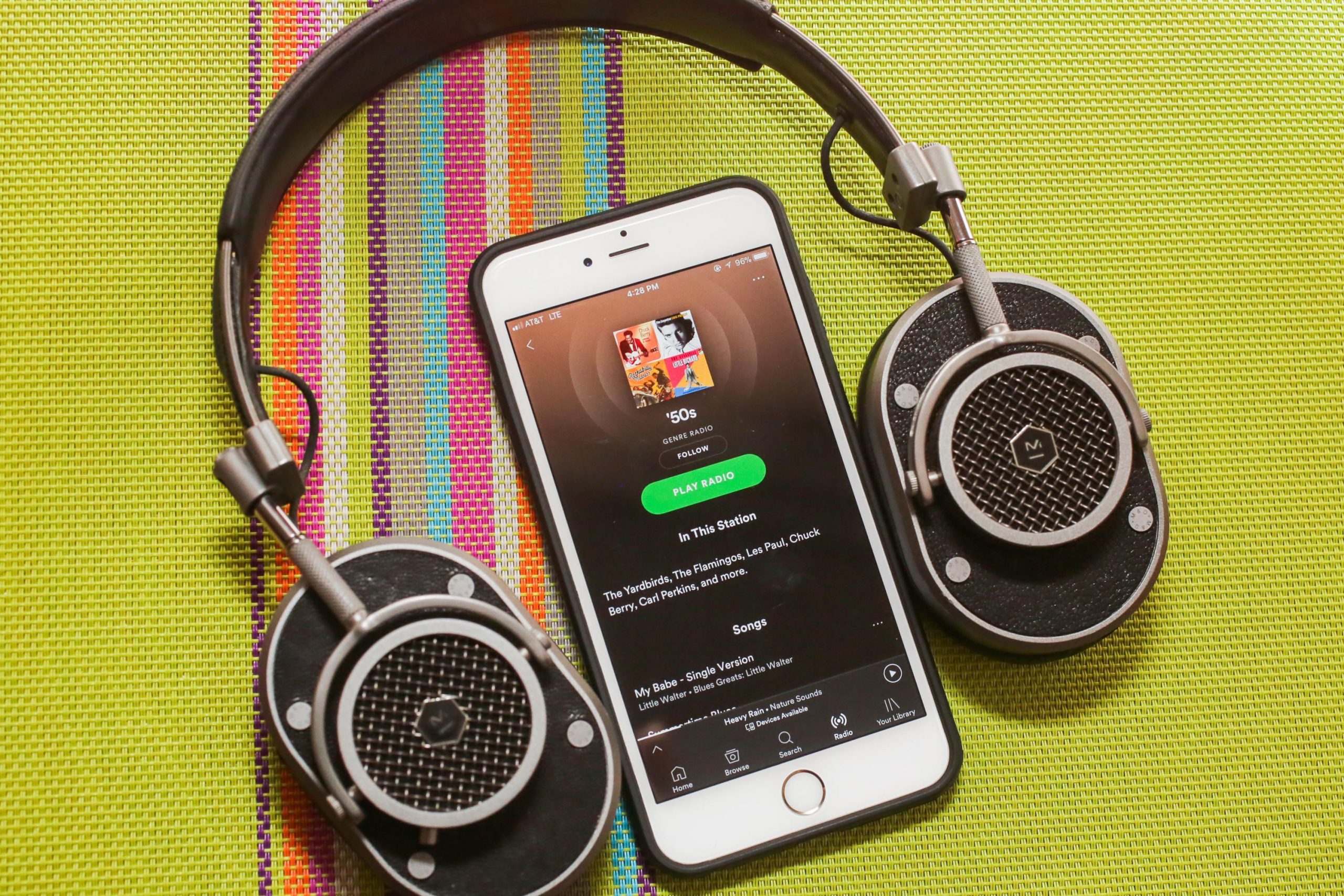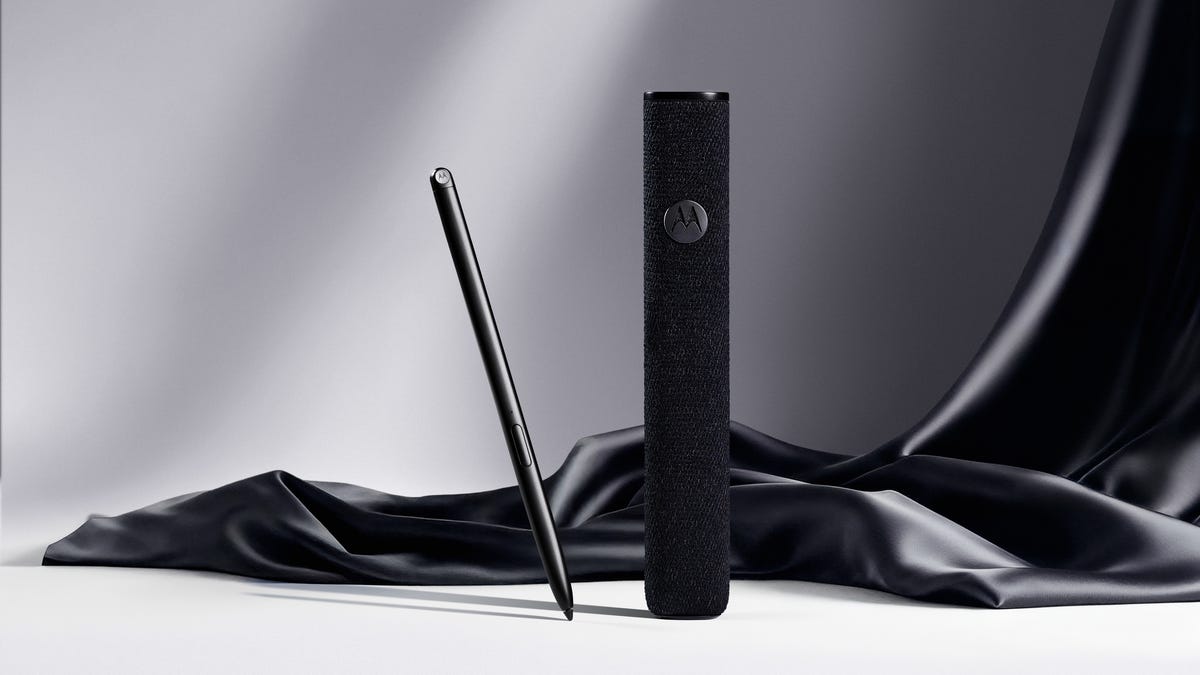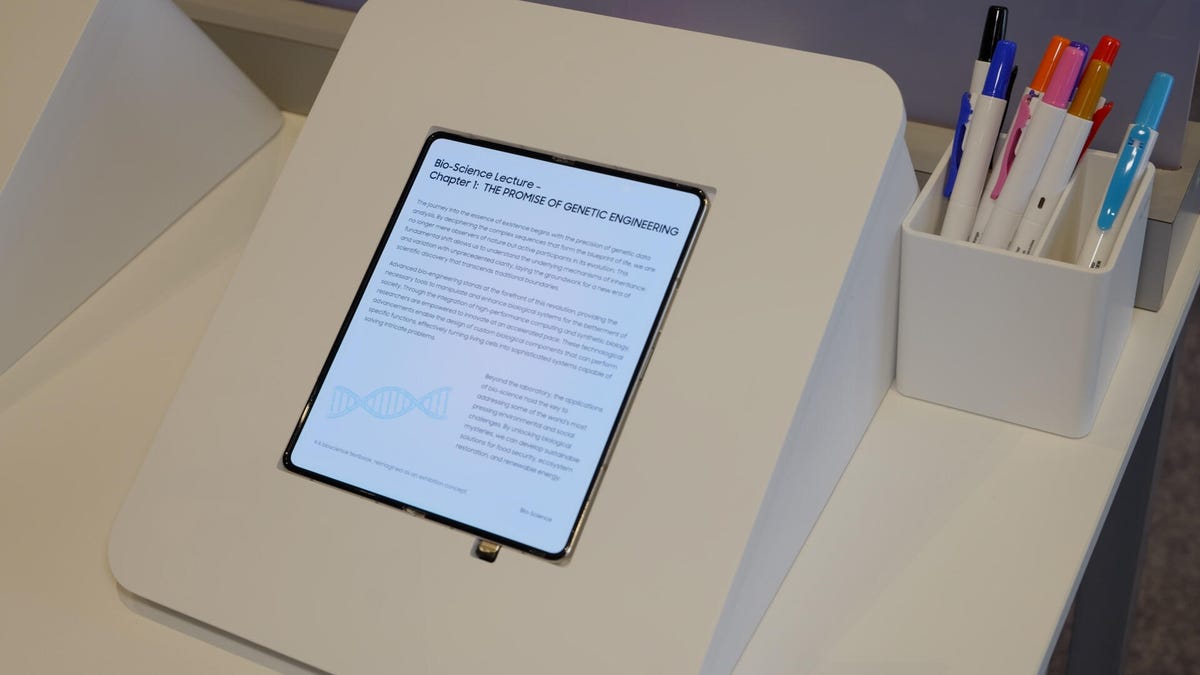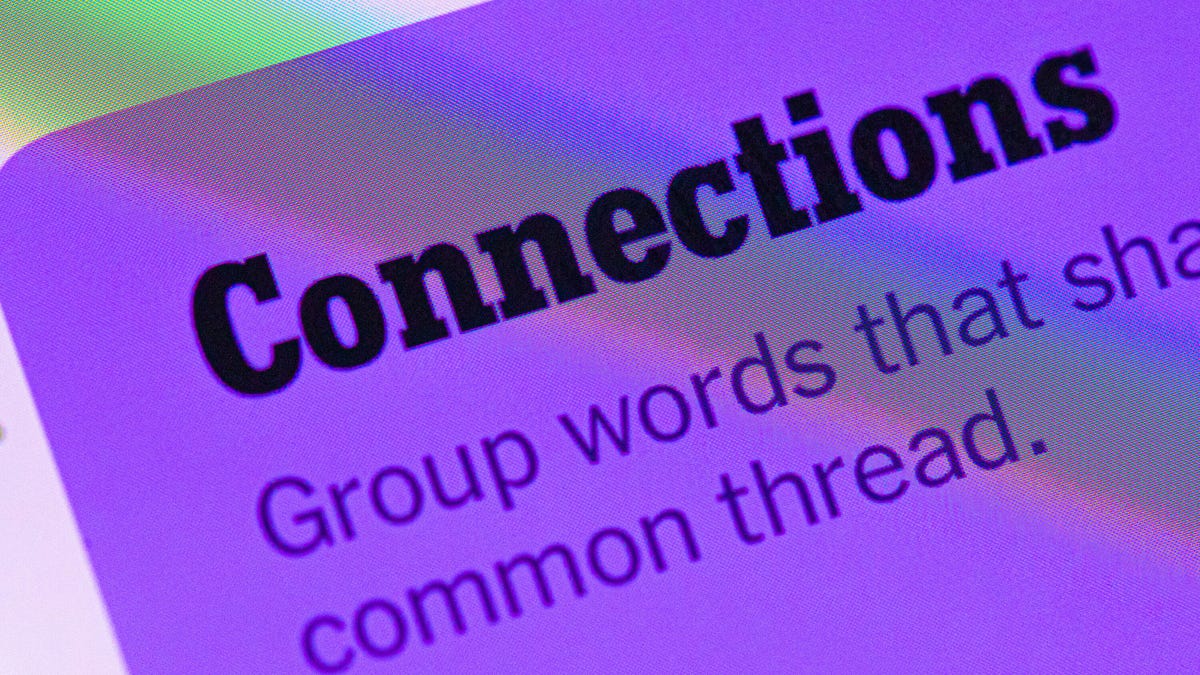Technologies
Spotify, Apple Music and more: What’s the best music app for you?
We compare the big streaming music services.

Sure, all the audiophiles and cool kids are talking about a vinyl resurgence and squabbling over the best turntables. But admit it, streaming music still is the most convenient way to listen to your favorite songs. While streaming used to mean sacrificing sound quality, that’s no longer the case. In fact, streaming music can sound indistinguishable from, or even superior to, an old-fashioned CD.
The question is, which streaming music service is best for you? We checked out Spotify, Amazon Music, Apple Music, YouTube Music, Tidal, Qobuz, Deezer and Pandora Premium to see how each platform stacks up for your subscription buck. While most offer music catalogs of over 50 million songs, each has its own unique pros and cons. We’ve also left out services that only play music in a radio format and don’t offer a la carte listening to allow you to select your own songs.
Services typically charge $10 a month and don’t have a contract, but swapping between them isn’t as straightforward as TV streaming. If you don’t want to rebuild your playlists and library from scratch when you switch, you have two main options — a music locker service such as YouTube Music, or the library import tool Soundiiz. The latter option can read the library from each of your music services and transfer them, and while there’s a $4.50 monthly charge, you can always cancel once you’ve converted your library.
So which music streaming services offer the best combination of price, sound quality and library size? Read on to find an in-depth look at each of the services and a feature comparison, along with a full price breakdown in the chart at the bottom of the page. We’ll update this list periodically. And if you want the TL;DR, these are the top three.
The best of the rest
Amazon Music Unlimited
Amazon Music Unlimited is the «grownup» (a.k.a. paid) version of Amazon Prime Music, which any Prime subscriber gets for «free.» It offers a greatly expanded catalog for an extra outlay per month: $8 for Prime members and $10 if you don’t have Prime. Rather than focusing on the cutting edge of music as some others here do, the Amazon music service features recommended playlists and radio stations that are grouped around artists you’ve already listened to.
The Good
- Cheaper than the top three if you’re an Amazon Prime member
- Lyrics automatically pop up on the «now playing» screen
- Offers free music stations for Amazon Echo, Echo Dot ($17 at Amazon) and Amazon Tap (includes ads)
- Step-up Amazon Prime Music HD service ($12.99 for Prime members) includes high-res and surround music from Sony 360 Reality Audio and Dolby Atmos
The Bad
- Artist profiles don’t have biographies
- Officially advertised as «tens of millions» of tracks strong, it’s unclear if the catalog is quite as large as its competitors
- The service no longer includes a music locker
Best for: Amazon Prime members who want to save a few bucks on a decent music catalog
YouTube Music
YouTube Music is the successor to Google Play Music, and if you sign up for the ad-free YouTube Premium you get YouTube Music thrown in for free. The good news is that YouTube Music is a mostly impressive service, and Google has retained the predecessor’s music locker system. If you have a legacy Google Play Music account you may be able to still transfer your library over to YouTube Music. And it’s not just legacy content: YouTube Music allows users to upload new tracks to its online music locker, too.
In even better news, YouTube Music offers a cleaner interface than Google Play Music. Instead of playlists, YouTube Music offers well-curated radio stations, which are the standout features. Unlike playlists, which are finite and contain specific tracks, radio stations play endlessly and are updated often.
The Good
- Monthly fee includes subscription to YouTube Music: commercial-free streaming on YouTube and YouTube Music
- Over 40 million tracks
- Retains Google Play Music’s music locker system: You can transfer existing songs from the old service, plus upload new ones in YouTube Music
The Bad
- The continued existence of Google Play Music is confusing for existing users
Best for: Heavy YouTube users and Android device users.
Pandora Premium
One of the most popular streaming radio services in the US, Pandora also offers the a la carte Premium ($10 a month)and no-ads Plus ($5 a month). The result is more flexibility than most competitors, and Premium has gained plenty more subscribers in recent years, even if the service is behind in terms of overall catalog size.
The Good
- One of the largest user bases, thanks to its free version
- Pandora’s Music Genome Project analyzes each track according to 450 different attributes in order to give better suggestions
The Bad
- Its audio quality is among the lowest available, even on the Premium subscription (192Kbps)
- It doesn’t really offer enough of an incentive for an upgrade from the free tier compared to the others here
- Not available outside the US
Best for: Pandora Premium is of most interest to people who already use Pandora and want to be able to pick exactly what they listen to. We’d recommend it to almost no one else.
Qobuz
Qobuz launched in the US in February 2019 with a clean interface, hi-res audio streams (which unlike Tidal’s don’t need an MQA decoder) and the ability to buy lossless music. It offers two plans — the hi-res Studio Premier for $15 a month and the $249 annual Sublime Plus, which offers discounts on the store. At 50 million tracks, Qobuz’s streaming catalog isn’t quite at the level of Tidal or Spotify, but it should be sufficient for everything but the more obscure artists.
The Good
- The app is really clean and fun to use
- Ability to listen to 24-bit music without needing a specialized decoder
- One of the most affordable hi-res services
- First 24-bit streaming service on Sonos
The Bad
- Some gaps in the catalog
Best for: Audiophiles who want hi-res music for a decent price plus the ability to buy and download albums
Deezer
French stalwart Deezer has been operating in the States since 2016, and it has a lot to offer, including a free tier (mobile only) and 56 million tracks. It has more than subscribers than some others on this list thanks, in part, to its previous affiliation with Cricket Wireless. The main Premium plan is $10 a month but users are also able to upgrade to a lossless version (CD quality) for $15 a month. While it reportedly boasts more users than Tidal, the service doesn’t offer enough to differentiate it from its similarly priced competitors.
What else do you need to know?
Streaming radio vs. on-demand
This guide covers on-demand music streaming services, and for that reason, we’ve purposely left out services that only play music in a radio format. Until recently this list excluded Pandora, but now that the company also offers a Premium tier we’ve included it here. Slacker Radio, TuneIn and iHeartRadio are other radio-style services that play music stations based around a theme or artist, without you explicitly picking tracks.
Music lockers: Your MP3s in the cloud
Amazon was one of the first services to offer uploading your MP3 collection into the cloud, but this was officially discontinued in 2018. Meanwhile, the Apple and Google services listed either allow you to combine your personal music collection with the streaming catalog, though tagging and organization can be a time-consuming challenge (your myriad live Phish tracks won’t organize themselves). Still, if you’ve invested money in digital music over the years, those two services offer a patch to continue enjoying that music online.
Music catalog sizes compared
The number of songs offered by a music service used to be one of the main differentiators, but most now have between 50 million and 70 million songs or more. However, depending on your favored genre, some of them have a more robust catalog that include many under-the-radar, indie or hip-hop artists. If you’re musically inclined, constantly on the hunt for your favorite new band, a streaming service like Spotify or Tidal may be more up your alley. Users who are less ambitious about expanding their musical taste will be satisfied with the smaller catalogs Amazon Music Unlimited or Pandora offer. Apple Music is somewhere in the middle, offering a healthy mix of mainstream tunes and underground unknowns.
Technologies
New Moto Things Include a Stylus for the Razr, Revamped Location Tracker
The Moto Pen Ultra will bring handwriting to the upcoming Razr Fold, while the Moto Tag 2 doubles the battery life of its predecessor to two years.

Motorola’s just-announced Razr Fold will be getting a premium stylus, which will arrive alongside a revamped location tracker.
The Moto Pen Ultra and Moto Tag 2 were announced Tuesday at CES 2026 during the Lenovo Tech World conference, debuting alongside the new Moto Watch as part of the Moto Things accessory line.
The Moto Pen Ultra comes with a magnetic case, which will then charge the stylus over USB-C. The pen features 4,096 levels of pressure sensitivity and a 6-axis motion sensor to assist with writing, drawing and sketching. When using the Pen Ultra with the Razr Fold, the stylus supports palm rejection and a range of tools from a quick access toolbar like Quick Clip for highlighting and sending content into a note for later.
While Motorola has made a series of stylus-equipped phones for its lower-cost Moto G line, the Pen Ultra appears to be specifically for the more flagship level devices Motorola makes like the Razr Fold.
The Pen Ultra is joined by the Moto Tag 2, which is an updated location tracker that supports Google’s Find Hub network. The Moto Tag 2 features double the battery life of the tracker it replaces, with Motorola stating it should last for two years. The Moto Tag 2 also supports ultra wideband to assist with precise location tracking.
Neither the Moto Pen Ultra nor the Moto Tag 2 had their pricing and release dates announced as part of the Tuesday event. The accessories join other announcements made by Motorola at Lenovo Tech World, which include the FIFA World Cup edition of the Motorola Razr and the Qira AI assistant.
Technologies
I Saw a Creaseless Foldable Screen at CES That Could End Up in the iPhone Fold
Samsung Display flexes its latest OLED concepts, and one in particular appeared to be the most promising.

Foldable phones have become thinner, more powerful, and sturdier over the years, but one attribute has remained constant: the crease on the inside display. At CES 2026, I saw a concept that eliminates that center line for a more seamless look.
Samsung Display, which is known for showing off futuristic concepts that may or may not make it out into the real world, showed off a prototype of an OLED foldable display that paints a picture of what may be on the horizon.
Admittedly, all I could think about was whether I’d be seeing something like this in the rumored iPhone Fold, if and when it makes its long-awaited debut.
The company placed two phone models side by side: one that was simply dubbed a «current» device (Samsung Display wouldn’t confirm if it’s the Galaxy Z Fold 7), and another that’s a concept. Looking at the two phones, the difference was striking. When viewing the concept screen directly and at an angle, I couldn’t really see the line down the center that characterizes present-day foldables. The current phone instantly looked outdated.
This is particularly meaningful amid reports that Apple is working with Samsung Display to make a creaseless foldable iPhone. The foldable has been rumored for years, and it appears Apple is taking its time to nail the design, with an emphasis on nixing that pesky crease. Perhaps what I saw at Samsung Display’s booth is a concept that will morph into what Apple equips its iPhone Fold with. But we’ll have to wait until the end of this year at the earliest to find out.
Samsung Display’s creaseless screen is also designed to be more durable. To demonstrate this, the company had a robotic arm fling a basketball at a «backboard» made of several foldable concept phones, and none of them got cracked or dented. I still flinched every time.
The creaseless foldable screen was one of several concepts Samsung Display showed off at CES. The company also had a vehicle mock-up equipped with OLED displays, including a curved, 18.1-inch L-shaped center screen for controlling climate, navigation and more. A 13.8-inch passenger display can move into and out of the dashboard for storage, and there’s an option that prevents the driver from seeing what’s on the passenger’s screen to avoid being distracted.
Samsung Display also had robots that are designed to be teaching assistants. They can guide students to classrooms, share information about professors and display assignments on a circular screen that serves as the «face.» We didn’t really see it carry out commands at the demo, but I was nonetheless enamored by the cute little robotic arms.
Despite all the futuristic notions, the one that stuck with me most was the creaseless display because of its practicality. It’s not clear how many of Samsung Display’s concepts will ever leave the lab, but if any of them do, I hope it’s that one.
Technologies
Today’s NYT Connections Hints, Answers and Help for Jan. 7, #941
Here are some hints and the answers for the NYT Connections puzzle for Jan. 7, #941

Looking for the most recent Connections answers? Click here for today’s Connections hints, as well as our daily answers and hints for The New York Times Mini Crossword, Wordle, Connections: Sports Edition and Strands puzzles.
Today’s NYT Connections puzzle is rather tricky. The purple category is especially mystifying. Read on for clues and today’s Connections answers.
The Times has a Connections Bot, like the one for Wordle. Go there after you play to receive a numeric score and to have the program analyze your answers. Players who are registered with the Times Games section can now nerd out by following their progress, including the number of puzzles completed, win rate, number of times they nabbed a perfect score and their win streak.
Read more: Hints, Tips and Strategies to Help You Win at NYT Connections Every Time
Hints for today’s Connections groups
Here are four hints for the groupings in today’s Connections puzzle, ranked from the easiest yellow group to the tough (and sometimes bizarre) purple group.
Yellow group hint: Lookalikes.
Green group hint: Part of something.
Blue group hint: National symbol.
Purple group hint: Squish down.
Answers for today’s Connections groups
Yellow group: Doppelgänger.
Green group: Portion.
Blue group: Common flag symbols.
Purple group: Pressed using a press.
Read more: Wordle Cheat Sheet: Here Are the Most Popular Letters Used in English Words
What are today’s Connections answers?
The yellow words in today’s Connections
The theme is doppelgänger. The four answers are clone, double, mirror and ringer.
The green words in today’s Connections
The theme is portion. The four answers are concern, interest, share and stake.
The blue words in today’s Connections
The theme is common flag symbols. The four answers are crescent, cross, star and stripe.
The purple words in today’s Connections
The theme is pressed using a press. The four answers are cider, garlic, trousers and wine.
Don’t miss any of our unbiased tech content and lab-based reviews. Add CNET as a preferred Google source.
-

 Technologies3 года ago
Technologies3 года agoTech Companies Need to Be Held Accountable for Security, Experts Say
-

 Technologies3 года ago
Technologies3 года agoBest Handheld Game Console in 2023
-

 Technologies3 года ago
Technologies3 года agoTighten Up Your VR Game With the Best Head Straps for Quest 2
-

 Technologies4 года ago
Technologies4 года agoBlack Friday 2021: The best deals on TVs, headphones, kitchenware, and more
-

 Technologies4 года ago
Technologies4 года agoVerum, Wickr and Threema: next generation secured messengers
-

 Technologies4 года ago
Technologies4 года agoGoogle to require vaccinations as Silicon Valley rethinks return-to-office policies
-

 Technologies4 года ago
Technologies4 года agoOlivia Harlan Dekker for Verum Messenger
-

 Technologies4 года ago
Technologies4 года agoiPhone 13 event: How to watch Apple’s big announcement tomorrow
